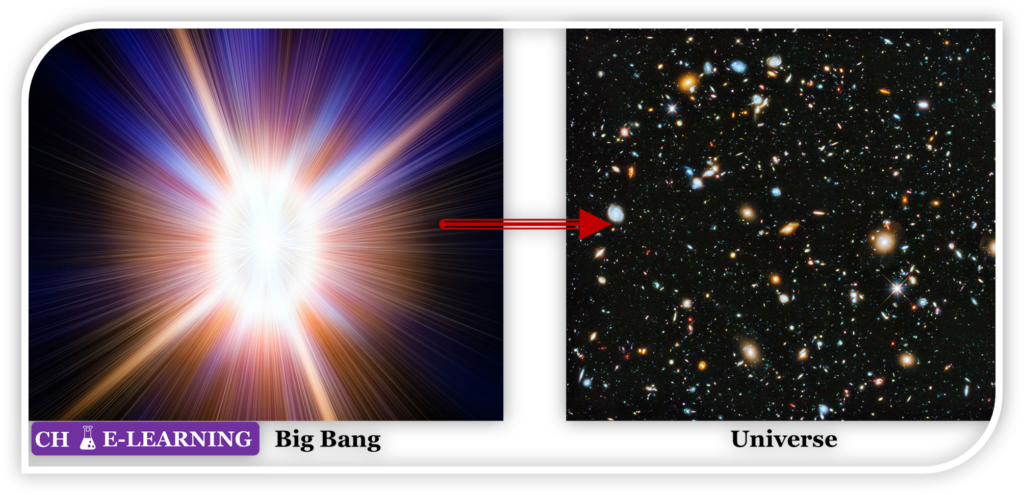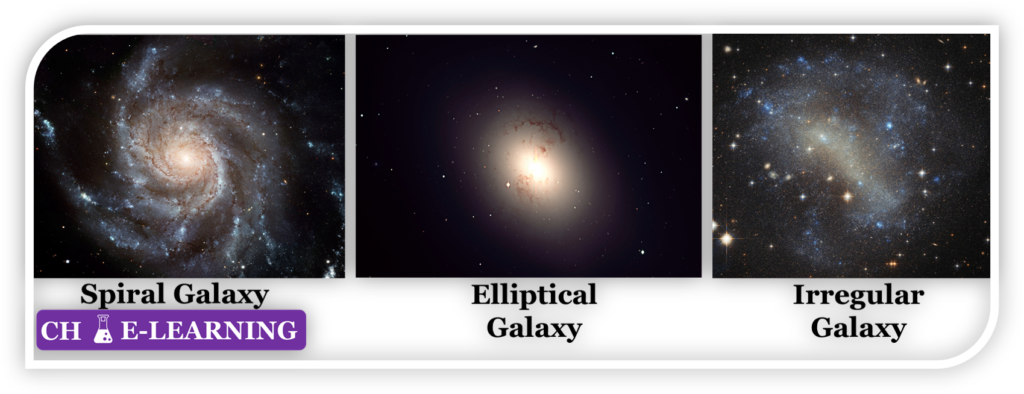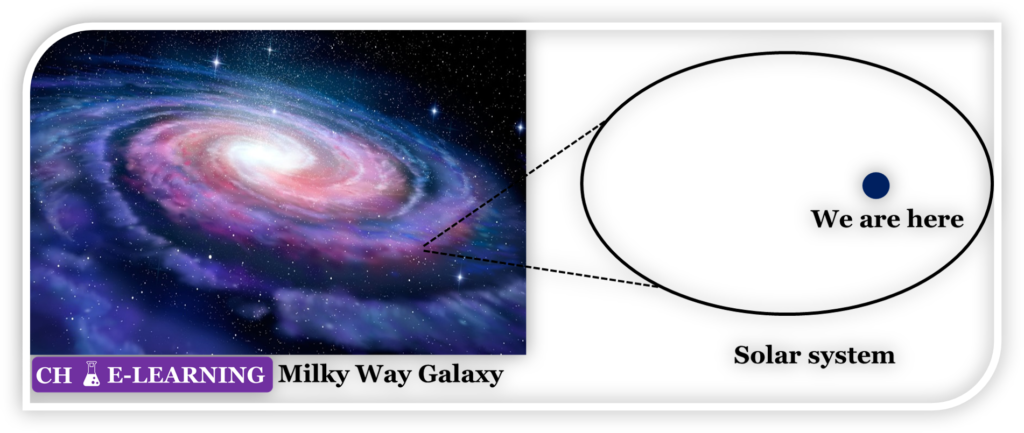Universe:
It came from the old French word Univers which means “all things”.
- The universe means everything. Everything can be space, time, galaxies, black holes, stars, planets, moons, all forms of matter, and energy. It is the whole cosmic system of matter and energy.
- It begins with Big Bang 13.8 billion years ago. As per the theory, our cosmos expanded from high-density and high-temperature states.

- The above picture of the universe was taken by the Hubble Space Telescope. In the picture, even tiny dots are whole galaxies.
- There are more than 100 billion galaxies in the universe. We can’t count them all yet.
Galaxy:
It is a gravitational-bound system of stars, gas, dust, and dark matter.
Shape of Galaxies:
They are categorized as per their apparent shape. They are typically divided into elliptical, spiral, or irregular galaxies.

- The light from each galaxy comes from the stars inside it.
Our Galaxy:
The Milky Way is our galaxy. It has more than 100 billion stars and planets. It has a supermassive black hole in the middle.

- The solar system is a small part of the Milky Way galaxy.
Solar System:
It is a gravitational bound system of the Sun and objects that orbit it.

Earth:
It is part of the solar system. It is the 3rd planet from the Sun. It is roughly 4.5 billion years old.
- The mean distance of Earth from the Sun is about 149.64 million km.
- It completes one revolution in about 365.25 days.
- The mass of the earth is 5.97×1024 kg

- The distance from the Earth to the Sun is called an astronomical unit (AU), which is used to measure distance throughout the solar system.
- It has a solid surface. It has one moon.
- It is surrounded by a layer of gases commonly known as air and is retained by Earth’s gravity.
- It has a particular near-surface environment and the presence of water which makes life possible on earth.
- Water covers 70 % of the Earth’s surface. It is the only planet in our solar system that supports life.
Earth’s Sphere:
The area near the surface of the earth can be divided into four inter-connected spheres.

Atmosphere:
It is the outer layer that surrounds the earth. It forms a barrier around the earth and extends up to approximately 10,000 km above the earth’s surface.
- It is always in motion and constantly changing.
- As we move upwards from the earth’s surface, the density of the atmosphere decreases. So, most of the mass of the atmosphere lies within 30 km of the earth’s surface.
- It protects our planet from outer dangers such as harmful radiations, solar flares, incoming meteoroids, etc.

- It makes an environment in which life can thrive.
- The atmosphere can be divided into five main layers i.e., Troposphere, Stratosphere, Mesosphere, Thermosphere, and Exosphere.
Hydrosphere:
It is made up of all of the water on the earth. It is always in motion.
- It includes surface water, groundwater, and water vapor in the atmosphere.

- This water can exist in three states i.e., solid, liquid, and gas.

- It covers approximately 70 % of the earth’s surface. Out of this total water, only 6 % water is fresh for drinking.
- Water is essential for all living things. The water cycle allows the hydrosphere to function.
Geosphere or Lithosphere:
It is made up of rocks, mountains, valleys, minerals, sand, and other materials.

- It extends from the surface to the center of the earth. It is composed of silicon, aluminum, iron, calcium, magnesium, sodium, potassium, and other elements.
- Generally, the crust and the outer rigid portion of the mantle (80-100 km) are referred to as the lithosphere.
- It provides natural resources and a place to grow food.
- It is divided into 15 tectonic plates (7 major & 8 minor) that fit together around the earth. These plates are not fixed and are slowly moving.
- Earthquakes, volcanoes, and the formation of mountains and ocean trenches are the result of the movement of tectonic plates against one another.
- Further, it can be divided into three different layers i.e., crust, mantle, and core.
Biosphere:
It is made up of all living beings such as plants, animals, fungi, bacteria, fish, humans, etc.

- Most of the Earth’s life is closer to the surface. It extends 500 meters below sea level and 6 km above sea level.
- It consists of several ecosystems such as forests, deserts, etc.
